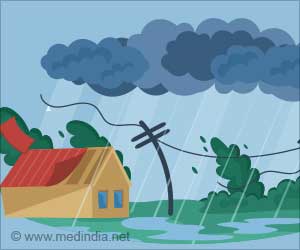Research explores how childhood home temperatures and community connectedness predict U.S. thermostat settings, influencing energy conservation strategies.

Why do you keep your house so cold? Study suggests childhood home temperature can predict adult thermostat settings
Go to source).
Thermostat Behavior: The Role of Childhood Home Temperature
Heating and cooling account for half of the annual electricity use in U.S. households, yet less than half of homeowners adjust their thermostats throughout the day to save energy. Since residential energy consumption represents 21% of the U.S. energy usage, reducing it is a promising approach to lowering national energy consumption and reducing fossil fuel use. Scientists are therefore seeking reliable evidence to help policymakers incentivize at-home energy conservation.‘Community ties shape thermostat settings, impacting winter energy use. #energyconservation #climatechange #medindia’





To investigate why U.S. adults heat and cool their homes the way they do, Gruda and Hanges surveyed 2,128 participants, who reported the average winter thermostat settings in their current and childhood homes. They also rated their emotional connectedness to their current communities, a metric referred to as “community fit.” The researchers controlled for age, gender, and household income, and participants were representative of the U.S. population.The Influence of Childhood Home Temperatures and Community Ties on Thermostat Settings
Results indicated that participants’ childhood home temperatures positively predicted their current home temperatures. For example: of people who live in cold-winter locales like New York, those raised in warmer homes tend to dial up their thermostats higher than those reared in cooler abodes.Additionally, the researchers observed that individuals with a strong sense of community belonging were more likely to align their home temperature settings with others in their community. For example: a New Yorker with strong community ties may keep their indoor climate cooler, while someone less enamored with the Big Apple may turn up the heat.
These results suggest that “policymakers may need to pivot towards campaigns that deeply resonate with the unique identity and values of individual communities” to encourage energy conservation, the researchers state.
The authors acknowledge that community connectedness may not translate directly to energy savings, especially in affluent communities, and encourage longitudinal studies to address household income and other contributing factors.
Advertisement
Reference:
- Why do you keep your house so cold? Study suggests childhood home temperature can predict adult thermostat settings - (https://phys.org/news/2024-07-house-cold-childhood-home-temperature.html)








